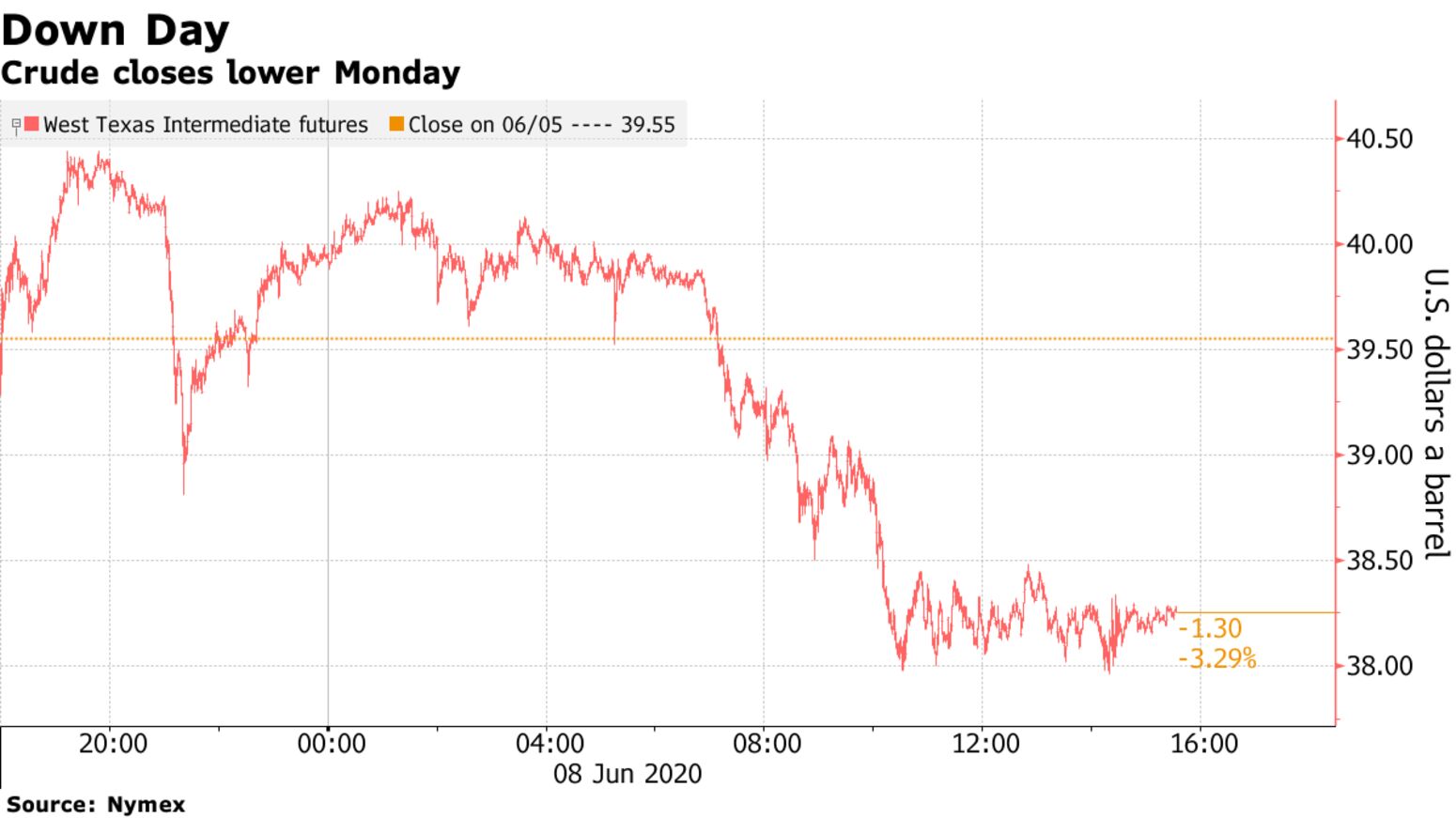Oil fell after moving past this weekend’s producer deal to extend supply cuts, with prices sliding on Saudi Arabia’s decision to end extra reductions. Futures in New York trimmed 3.4% Monday, even after Saudi Arabia and Russia led OPEC and its allies in a one-month extension of record production cuts over the weekend. Meanwhile, Libyan oil is making its way to the market for the first time since January, as the country’s conflict-ravaged output limps toward a revival. What’s more, the outlook for demand is still gloomy. Goldman Sachs Group Inc. turned bearish in the short-term on oil due to poor returns from refining. The OPEC+ alliance’s pact is already more than priced in, and consumption forecasts are “running ahead of a more gradual and still highly uncertain recovery,” according to the bank.
“The nature of the OPEC+ deal is not the golden bullet solution that it is advertised to be,” said Robert Yawger, director of the futures division at Mizuho Securities USA, in a note to clients Monday afternoon.

Th OPEC+ agreement calls for cheaters to cut by levels above and beyond their agreed production number to compensate for earlier levels of cheating. “That will never happen,” Yawger said, adding that Iraq would have to cut 80% above their quota agreement to compensate. U.S. West Texas Intermediate oil for July delivery fell $1.36 to settle at $38.19 a barrel in New York, after earlier rising as much as 2.3%. Global benchmark Brent crude for August slumped $1.50 to $40.80 a barrel in London.
“With OPEC’s latest cut already more than priced in, we now forecast a pull-back in prices in coming weeks,” Damien Courvalin, an analyst at Goldman Sachs, said in a note to clients. Brent could slump to $35 a barrel in the short-term, according to the report. While production cuts have helped pull oil prices out of a crash below zero in April, they have also raised the prospect of crude’s advance encouraging higher American shale output.
